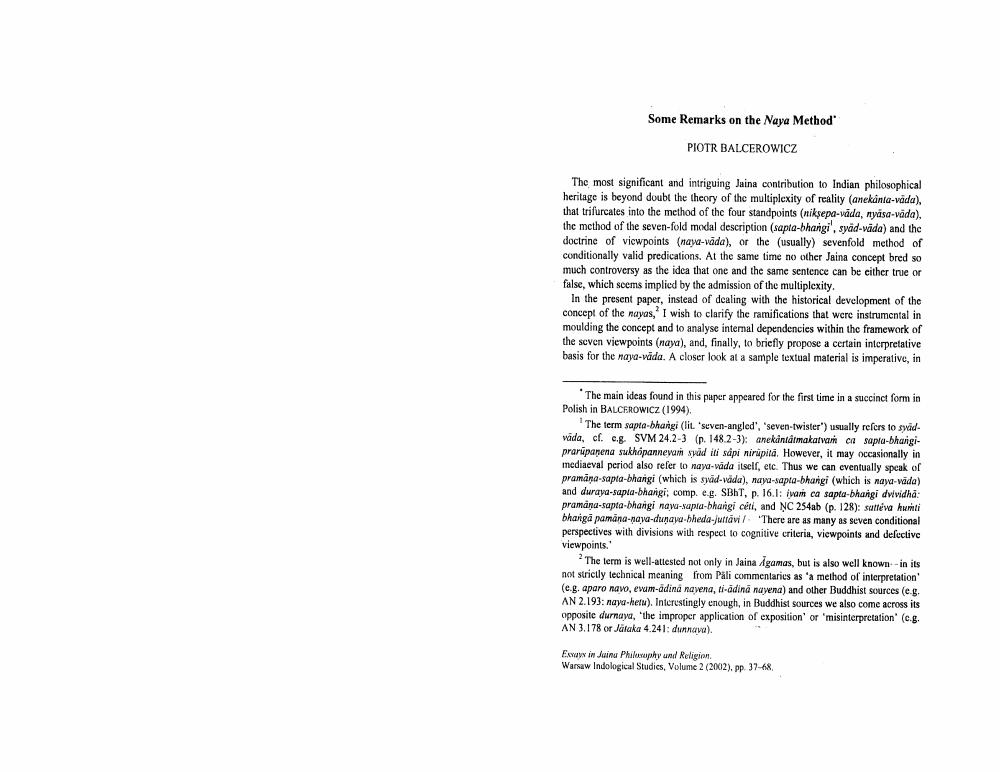________________
Some Remarks on the Naya Method
PIOTR BALCEROWICZ
The most significant and intriguing Jaina contribution to Indian philosophical heritage is beyond doubt the theory of the multiplexity of reality (anekanta-vada), that trifurcates into the method of the four standpoints (niksepa-wada, nyása vada). the method of the seven-fold modal description (sapta-bhangi'. sydd wida) and the doctrine of viewpoints (naya-vada), or the (usually) sevenfold method of conditionally valid predications. At the same time no other Jaina concept bred so much controversy as the idea that one and the same sentence can be either true or false, which seems implied by the admission of the multiplexity.
In the present paper, instead of dealing with the historical development of the concept of the nayas," I wish to clarify the ramifications that were instrumental in moulding the concept and to analyse internal dependencies within the framework of the seven viewpoints (naya), and, finally, to bricfly propose a certain interpretative basis for the naya-vada. A closer look at a sample textual material is imperative, in
The main ideas found in this paper appeared for the first time in a succinct form in Polish in BALCEROWICZ (1994),
The term sapta-bhangi (lit. 'seven-angled', 'seven-twister") usually refers to swad vada, cf. c.g. SVM 24.2-3 (p. 148.2-3): anekintamakatvanas sapla-bhangiprarüpagena sukhópannevam saditi sapi nirapita. However, it may occasionally in mediaeval period also refer to naya-vada itself, etc. Thus we can eventually speak of pramana-sapta-bhangi (which is syd-voda), maya-sapla-bhangi (which is naya-vida) and duraya-sapla-bhangi: comp. e.g. SBT, p. 16.1: ivam ca sapta-bhangi dvividha: pramana-sapta-bhangi nawa-rapia-bhangi céri, and NC 254ab (p. 128): sutteva humiti bhanga pamana naya-dunaya-bheda-juttavi/ 'There are as many as seven conditional perspectives with divisions with respect to cognitive criteria, viewpoints and defective viewpoints.
The term is well-attested not only in Jaina Agamas, but is also well known - in its not strictly technical meaning from Pali commentaries as a method of interpretation (eg.aparo navo, evum-adina navena, ti-adina nyena) and other Buddhist sources (e.g. AN 2.193: naya-her). Interestingly enough, in Buddhist sources we also come across its opposite durnava, the improper application of exposition' or 'misinterpretation (eg AN 3.178 or Jataka 4.241: durava).
Exwww in Jaina Philosophy und Religion Warsaw Indological Studies, Volume 2 (2012), pp 37-68




